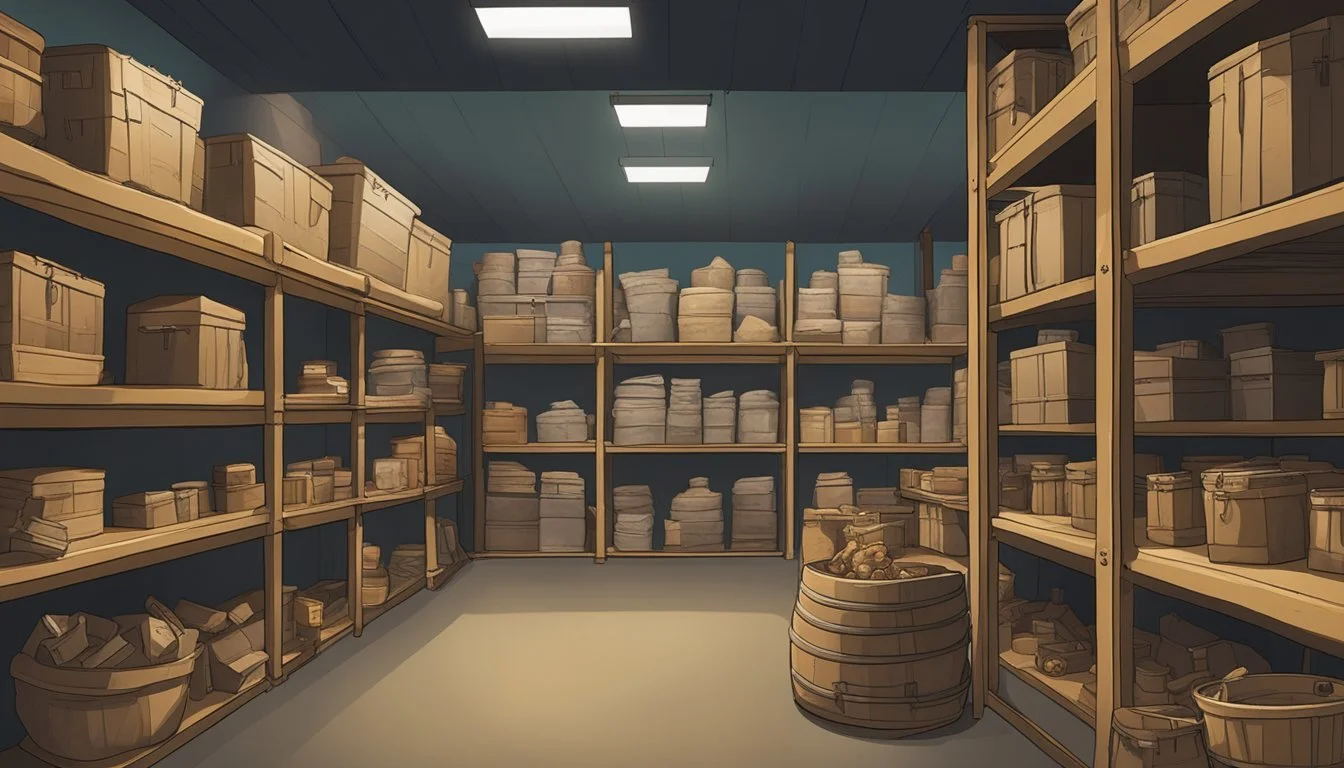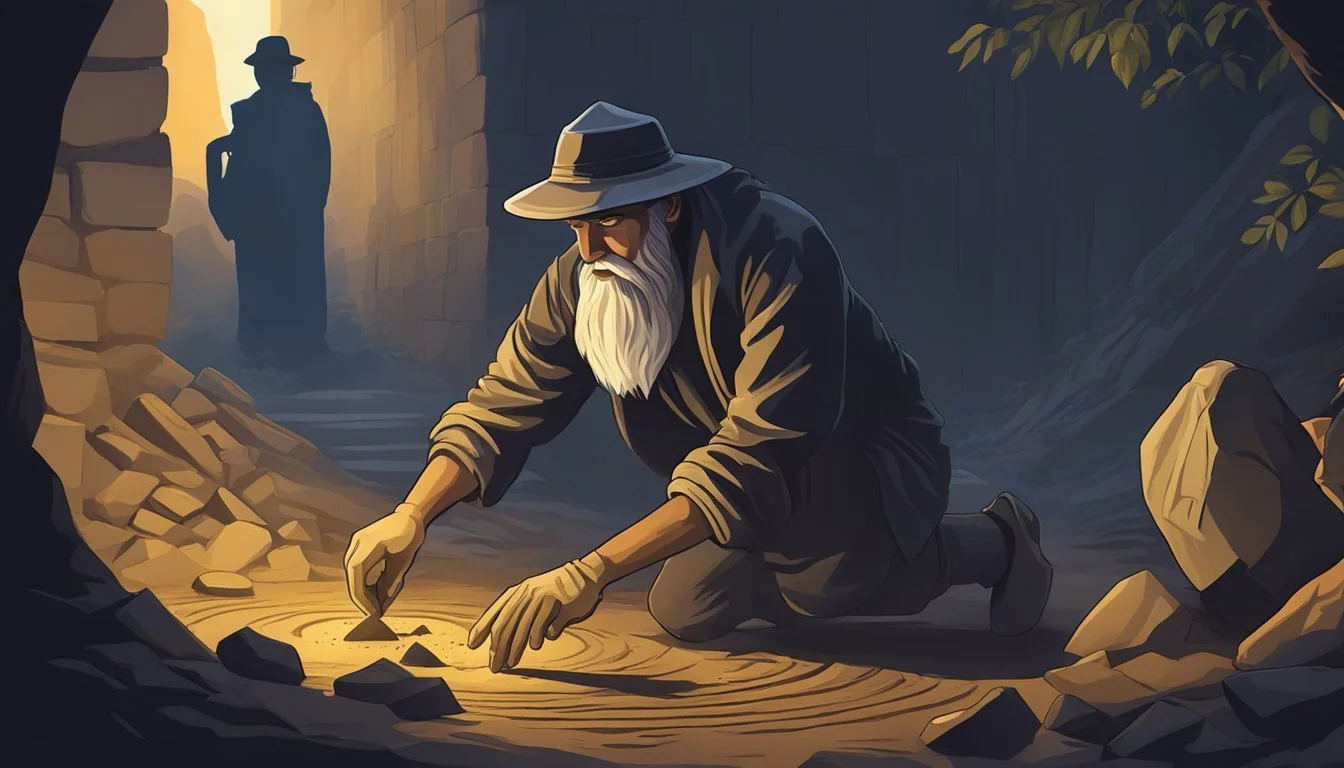8 Riveting Documentaries on Archaeological Theft and Smuggling
Uncovering the Dark Side of Antiquities Trade
Archaeological theft and smuggling represent a significant threat to our collective cultural heritage. This illicit trade deprives nations of their historical artifacts and robs humanity of valuable insights into past civilizations. Documentaries on this subject shed light on the shadowy world where priceless relics are illegally excavated, trafficked across borders, and sold to unscrupulous collectors.
These films expose the complex networks behind antiquities smuggling, revealing connections between looters, middlemen, and high-end buyers. They also highlight the challenges faced by archaeologists, law enforcement, and governments in combating this global problem. By bringing attention to archaeological theft, these documentaries play a crucial role in raising public awareness and supporting efforts to protect irreplaceable cultural treasures.
1) Stolen Heritage
Archaeological theft and smuggling have devastating consequences for cultural heritage worldwide. Priceless artifacts are ripped from their original contexts, destroying invaluable historical information.
Museums and local communities lose access to important cultural treasures. These stolen pieces often end up in private collections or sold on the black market, depriving the public of educational opportunities.
The illegal trade in antiquities can also fund criminal activities and terrorist groups. Smugglers exploit political instability and conflict zones to loot archaeological sites and museums.
Many stolen artifacts remain unrecovered for decades. Even when found, debates over rightful ownership can delay their return to countries of origin. This ongoing loss of heritage impacts national identities and collective memory.
Documentaries on this topic shed light on the complex networks involved in antiquities trafficking. They reveal the challenges faced by law enforcement and archaeologists in combating this global issue.
2) The Ivory Tower
"The Ivory Tower" is a thought-provoking documentary released in 2014, directed by Andrew Rossi. While not directly about archaeological theft, it explores the pressing issues within higher education in the United States.
The film examines the rising costs of college tuition and the increasing burden of student debt. It presents a critical look at the sustainability of the current higher education model in America.
Rossi's documentary features interviews with students, educators, and experts in the field. It highlights the challenges faced by both public and private institutions in maintaining quality education while managing financial pressures.
"The Ivory Tower" raises important questions about the value of a college degree in today's economy. It explores alternative education models and potential solutions to the growing crisis in higher education.
The film received positive reviews for its comprehensive approach to a complex issue. It premiered at the Sundance Film Festival and was later distributed by CNN Films and Samuel Goldwyn Films.
3) Looting History
"Looting History" is a compelling television series that explores the dark world of antiquities theft and smuggling. This docuseries, which premiered in 2023, delves into the global crime wave threatening the world's cultural heritage.
The show spans six episodes, each running approximately 44 minutes. It presents a thorough examination of how priceless artifacts are plundered from their countries of origin and end up in private collections or museums through illicit channels.
One episode focuses on the looting of the Iraq Museum in Baghdad during the 2003 invasion. It chronicles the efforts of Iraqi archaeologist Donny George and US Marine Colonel Matthew Bogdanos to investigate and recover the stolen antiquities.
The series sheds light on the complex networks involved in antiquities smuggling, from local looters to international dealers and buyers. It highlights the devastating impact of this illegal trade on archaeological sites and cultural heritage worldwide.
"Looting History" offers viewers a rare glimpse into the efforts to combat this illicit trade. It showcases the work of dedicated professionals striving to protect and recover stolen artifacts, preserving history for future generations.
4) The Lost Legacy
"The Lost Legacy" documentary explores the devastating impact of archaeological theft on cultural heritage. It follows a team of experts tracking stolen artifacts from ancient sites across the Middle East and North Africa.
The film reveals how looters exploit conflict zones and political instability to plunder priceless relics. It shows the complex networks that move stolen antiquities through black markets and into private collections worldwide.
Interviews with archaeologists, law enforcement, and reformed smugglers provide insider perspectives on this illicit trade. The documentary highlights how the loss of artifacts erases crucial historical context and knowledge about past civilizations.
Viewers witness the painstaking efforts to recover and repatriate looted treasures. The film also examines innovative technologies and international collaborations aimed at protecting vulnerable archaeological sites from theft.
"The Lost Legacy" serves as a sobering reminder of the ongoing threats to our shared cultural heritage. It underscores the importance of preserving archaeological finds in their original contexts for future study and appreciation.
5) The Secret Worlds of Art
"The Secret Worlds of Art" explores the hidden underbelly of the art world, exposing the intricate networks of theft and smuggling that operate behind the scenes. This documentary sheds light on the shadowy figures who orchestrate the illicit trade of priceless artifacts and masterpieces.
The film takes viewers on a journey through clandestine auctions, private collections, and underground markets. It reveals how stolen artworks and antiquities are laundered and sold to unsuspecting buyers, often ending up in prestigious museums and galleries.
Experts and investigators share their insights into the methods used by art thieves and smugglers. They explain how these criminals exploit loopholes in international laws and take advantage of the art world's culture of secrecy and discretion.
The documentary also examines the devastating impact of art theft on cultural heritage. It highlights the efforts of dedicated professionals working to recover stolen artifacts and return them to their rightful owners or countries of origin.
"The Secret Worlds of Art" offers a compelling look at the intersection of crime, culture, and commerce. It challenges viewers to consider the ethical implications of collecting and displaying art with questionable provenance.
6) The Dark Side of Archaeology
Archaeological theft and smuggling cast a shadow over the field of archaeology. This documentary delves into the ethical dilemmas faced by experts and institutions when dealing with artifacts of questionable provenance.
The film explores how some archaeologists and museum curators have been implicated in acquiring looted items. It examines cases where professionals turned a blind eye to suspicious origins of artifacts in pursuit of academic recognition or institutional prestige.
Interviews with whistleblowers and reformed smugglers provide insider perspectives on the illegal antiquities trade. The documentary highlights how demand from private collectors and museums fuels the black market for archaeological treasures.
Experts discuss the damage done to archaeological sites by looters seeking valuable artifacts. The loss of scientific context when items are removed without proper documentation is emphasized as a major setback for historical research.
The film also touches on debates around repatriation of artifacts to countries of origin. It presents arguments from various stakeholders, including source nations, museums, and indigenous groups with cultural claims to certain objects.
7) Art Crime: Pirates of the Past
"Art Crime: Pirates of the Past" explores the shadowy world of antiquities theft and smuggling. This documentary sheds light on the criminals who plunder archaeological sites and traffic priceless artifacts.
The film follows investigators as they track down stolen treasures from ancient civilizations. It reveals how looters exploit unstable regions to pillage cultural heritage sites.
Viewers learn about the sophisticated networks that move illegally excavated objects across borders. The documentary exposes how seemingly respectable dealers and collectors fuel demand for looted antiquities.
Expert interviews provide insight into the devastating impact of archaeological theft. Archaeologists explain how crucial context is lost when sites are ransacked for valuable items.
The film also examines efforts to repatriate stolen artifacts to their countries of origin. It highlights the challenges of proving provenance and navigating complex international laws.
"Art Crime: Pirates of the Past" offers a compelling look at those who profit from erasing history. It underscores the importance of preserving cultural heritage for future generations.
8) Scavengers Beneath the Temple
"Scavengers Beneath the Temple" unveils the hidden world of archaeological theft occurring beneath sacred sites. This documentary exposes the illegal excavations and looting taking place under ancient temples and religious structures.
The film follows a team of archaeologists and law enforcement officials as they work to uncover and prevent these illicit activities. It showcases the advanced technologies used to detect underground disturbances and identify potential dig sites.
Viewers gain insight into the motivations driving looters and the international networks facilitating the trade of stolen artifacts. The documentary highlights the devastating impact of these crimes on cultural heritage and historical knowledge.
Interviews with former looters provide a rare glimpse into the dangerous and secretive world of artifact theft. The film also explores the challenges faced by authorities in prosecuting offenders and recovering stolen items.
"Scavengers Beneath the Temple" raises important questions about the preservation of archaeological sites and the global demand for antiquities. It serves as a call to action for increased protection of vulnerable historical locations and stricter regulation of the antiquities market.
Historical Context of Archaeological Theft
Archaeological theft has plagued ancient sites and artifacts for centuries. This illicit practice has evolved alongside changing societal, economic, and geopolitical factors, with devastating consequences for cultural heritage preservation.
Ancient Civilizations and Their Artifacts
Ancient civilizations left behind priceless artifacts that provide invaluable insights into human history. Egypt's tombs and pyramids housed exquisite treasures, while Mesopotamian cities contained cuneiform tablets and intricate sculptures. Greek and Roman ruins yielded statues, pottery, and jewelry of immense artistic and historical value.
These artifacts became targets for looters and smugglers seeking profit. The plundering of Egyptian tombs dates back thousands of years, with even pharaohs engaging in the practice. During the Renaissance, European collectors fueled a market for classical antiquities, leading to widespread excavation and exportation of artifacts from Greece and Italy.
Factors Leading to Increased Theft
The 19th and 20th centuries saw a surge in archaeological theft due to several factors. Colonial expansion gave Western powers access to archaeological sites across the globe. This period witnessed large-scale removal of artifacts from their countries of origin.
Technological advancements in transportation and communication facilitated the global trade of stolen antiquities. The rise of wealthy private collectors and prestigious museums created a lucrative market for these items. Political instability and economic hardship in artifact-rich regions often led to increased looting as a means of survival.
Recent conflicts in the Middle East have exacerbated the problem. The Iraq War and Syrian Civil War left archaeological sites vulnerable to theft and destruction. Terrorist groups have exploited the antiquities trade to fund their operations, further complicating efforts to combat archaeological theft.
Legal and Ethical Implications
Archaeological theft and smuggling raise complex legal and ethical issues. International laws aim to protect cultural heritage, while ethical concerns arise around artifact discovery and ownership.
International Laws on Artifact Protection
The 1970 UNESCO Convention prohibits illicit import, export, and transfer of cultural property. This treaty forms the basis for many national laws on artifact protection. The United States implemented the Convention on Cultural Property Implementation Act in 1983, restricting imports of archaeological materials.
Interpol maintains a database of stolen artworks and artifacts to aid in recovery efforts. The 1995 UNIDROIT Convention addresses private law aspects of cultural property protection, focusing on the return of stolen or illegally exported objects.
Despite these measures, enforcement remains challenging due to the global nature of the antiquities trade.
Ethical Concerns in Archaeological Discovery
Archaeologists face ethical dilemmas when excavating sites in countries with unstable political situations. The potential for looting or destruction of artifacts must be weighed against the scientific value of discovery.
The issue of repatriation continues to spark debate. Many museums and private collectors possess artifacts acquired through questionable means in past decades. Ethical considerations now push for returning these items to their countries of origin.
Local communities' rights and involvement in archaeological projects have gained importance. Engaging indigenous populations and respecting their cultural heritage is now considered crucial for ethical archaeological practices.








